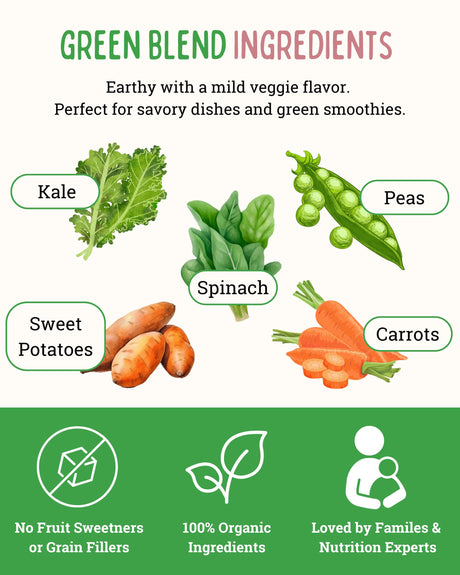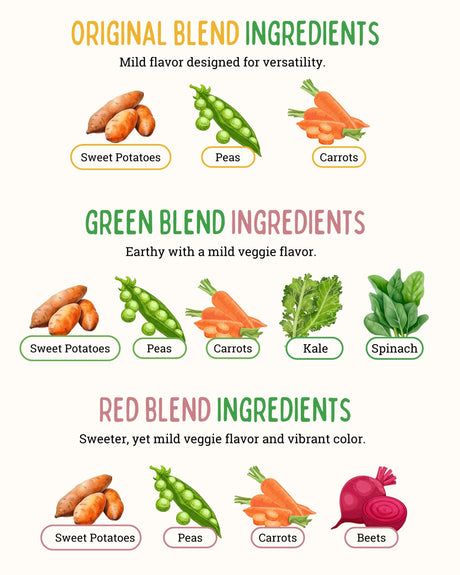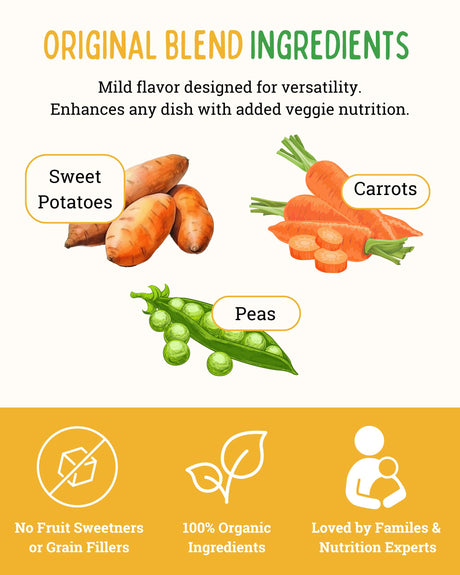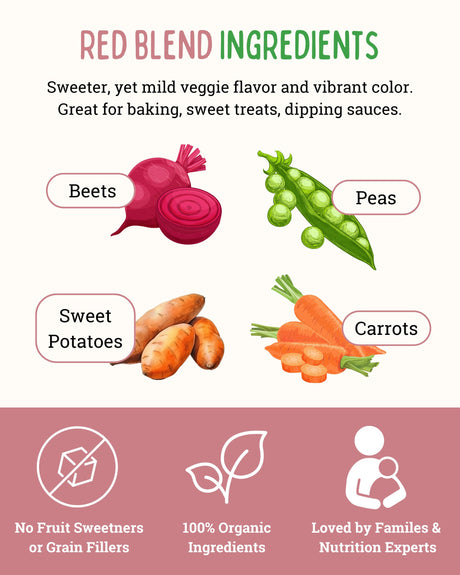The Importance of Balanced Nutrition
Ensuring that children receive balanced nutrition is paramount for their growth and development. It provides the essential building blocks for strong bones, a robust immune system, and proper cognitive function.
A balanced diet also reduces the risk of childhood obesity and related health issues, setting the stage for a lifetime of healthy habits.
Challenges Faced by Parents

Parents face numerous hurdles when trying to provide balanced nutrition for their children.
Picky eating habits, busy schedules, and the prevalence of processed foods can make it difficult to create wholesome meals.
Additionally, the constant exposure to unhealthy food advertisements and peer influences can lead to poor dietary choices.
Our Goal: A Guide for Building Balanced Plates
The goal of this blog is to empower parents, with practical tips and guidelines to overcome these challenges. By the end of this blog, parents will have a better understanding of how to construct balanced plates for their children, ensuring they receive the nutrients they need for optimal growth and development.
Understanding Nutritional Needs
Specific Nutritional Requirements for Children
Children's nutritional needs vary greatly depending on their age and stage of development. Infants, for example, require a diet rich in fats and protein to support rapid brain growth, while older children need a balance of carbohydrates, protein, and healthy fats to fuel their active lifestyles.
By understanding these age-specific requirements, parents can tailor their children's diets accordingly.
The Role of Macronutrients and Micronutrients
Macronutrients (carbohydrates, proteins, and fats) and micronutrients (vitamins and minerals) play vital roles in child development. Carbohydrates provide the energy needed for play and learning, while proteins are the building blocks for growing tissues.
Healthy fats, such as those found in avocados and nuts, support brain development. Micronutrients like iron, calcium, and vitamin D are essential for bone health, immunity, and cognitive function. Parents should aim to include a variety of foods to ensure their children receive a wide array of these nutrients.
Significance of Balanced Nutrition
Balanced nutrition is the cornerstone of a child's growth, learning, and overall health.
It's not just about filling their tummies but nourishing their bodies with the right combination of nutrients.
A well-balanced diet supports proper growth, cognitive function, and immune health.
It also helps children maintain a healthy weight and reduces the risk of chronic diseases later in life. By providing a variety of foods in the right proportions, parents can ensure that their children get the nutrients they need to thrive.
Food Groups and Their Importance
Breakdown of Food Groups

Balancing a child's plate starts with understanding the key food groups. These include fruits, vegetables, grains, proteins, and dairy (or dairy alternatives). Each group brings unique benefits to the table. Fruits and vegetables provide essential vitamins, minerals, and fiber.
Grains, particularly whole grains, offer energy and fiber for digestion. Proteins, whether from animal or plant sources, are crucial for muscle development and overall growth. Dairy products are rich in calcium for strong bones and teeth.
Guidelines on Portion Sizes
Portion control is crucial in ensuring that children receive the right amount of nutrients without overeating. For example, a preschooler's portion of vegetables may be smaller than that of a teenager.
It's essential to be mindful of portion sizes, as oversized portions can lead to unhealthy eating habits and weight issues in the long run.
Incorporating a Variety of Foods
Variety is the spice of a balanced plate. To make meals interesting and nutritious, parents can get creative by mixing and matching foods from different groups. For example, whole grain pasta with a tomato and vegetable sauce can incorporate grains, vegetables, and even proteins if lean meat or legumes are added.
Encouraging kids to try different foods exposes them to a broader range of nutrients and flavors, making mealtime more exciting and nutritious.
The Benefits of Fruits and Vegetables
Essential Nutrients and Fiber
Fruits and vegetables are nutritional powerhouses for children. They're packed with essential vitamins, minerals, and fiber. These nutrients play a vital role in children's growth, immune function, and overall health.
For example, vitamin C from citrus fruits boosts the immune system, while potassium in bananas supports heart health. Fiber aids in digestion, keeping things moving smoothly in the gut.
Encouraging Veggie and Fruit Consumption
Getting kids excited about fruits and veggies can be a challenge, but it's a crucial part of building a balanced plate. One strategy is to make them visually appealing by arranging colorful fruit platters or creating veggie-based animal shapes.
Parents can also involve children in meal planning and preparation. When kids take part in choosing and preparing fruits and vegetables, they're more likely to be interested in trying them.
The Importance of Color and Diversity
Variety is key when it comes to fruits and vegetables. Different colors indicate various nutrients, so it's essential to include a range of hues on the plate.
For example, orange vegetables like carrots are rich in beta-carotene, which is essential for eye health, while leafy greens like spinach provide folate for brain development. Encouraging a rainbow of produce ensures that children receive a broad spectrum of vitamins and minerals for optimal health.
The Role of Lean Proteins
Supporting Growth and Muscle Development
Lean proteins are essential for children's growth and muscle development. They provide the building blocks for healthy muscles, tissues, and organs. Foods like lean meats, poultry, fish, and plant-based options like beans and tofu are excellent sources of protein.
These foods supply the body with essential amino acids, helping children reach their growth milestones and maintain healthy body composition.
Sources of Healthy Fats

Healthy fats play a vital role in brain development and function. Omega-3 fatty acids, found in fatty fish like salmon and walnuts, are particularly beneficial for cognitive development. Including sources of healthy fats in a child's diet is crucial for optimal brain health.
Avocados, olive oil, and nuts are also excellent choices that contribute to overall well-being.
Protein-Rich and Fat-Rich Foods for Kids
Balancing a child's plate with protein-rich and fat-rich foods ensures they receive the necessary nutrients for growth and brain function. Examples of protein-rich options include grilled chicken, beans, quinoa, and yogurt.
For healthy fats, parents can incorporate avocados into sandwiches, sprinkle chia seeds on yogurt, or prepare a delicious salmon dish. Building a balanced plate with these components provides children with the nutrients they need to thrive.
The Benefits of Whole Grains and Fiber
Whole grains and dietary fiber are crucial for supporting healthy digestion and sustained energy levels in children. Fiber aids in regulating bowel movements and preventing constipation, a common concern in young children.
Moreover, it helps stabilize blood sugar levels, preventing energy crashes and mood swings.
Incorporating Whole Grains
Incorporating whole grains into children's meals is an excellent way to boost their nutritional intake. Opt for whole-grain bread, pasta, and brown rice instead of refined options.
Quinoa, oats, and whole-grain cereal are also great additions to breakfast. Parents can get creative by making whole-grain pancakes or using whole-grain tortillas for wraps.
These choices provide essential nutrients and keep kids feeling full and energized.
Common Misconceptions About Grains and Carbs
There are common misconceptions about grains and carbohydrates, with some believing they should be avoided for a healthy diet. However, whole grains are rich in vitamins, minerals, and fiber, making them an essential part of a balanced diet.
They provide long-lasting energy and help children maintain focus throughout the day.
It's crucial to distinguish between healthy whole grains and refined, sugary options to make the best choices for your child's nutrition.
Dairy and Dairy Alternatives: Building Strong Bones
Dairy products and fortified dairy alternatives play a pivotal role in a child's diet by providing essential nutrients, particularly calcium and vitamin D. These nutrients are crucial for developing strong bones and teeth.
Calcium also aids in muscle function and nerve transmission, making it vital for children's overall health.
Options for Dietary Preferences and Intolerances
For children with lactose intolerance or dietary preferences like veganism, there are plenty of dairy alternatives available. Almond, soy, and oat milk are excellent sources of calcium and vitamin D, and they can be seamlessly incorporated into a child's diet.
It's important to ensure that these alternatives are fortified with these essential nutrients to match the benefits of traditional dairy.
Choosing Age-Appropriate Dairy Products

Selecting age-appropriate dairy products is key to providing children with the right nutrients in the right amounts. For toddlers, whole milk is recommended to support their rapid growth and brain development.
As children grow, transitioning to low-fat or non-fat milk is typically advised to manage calorie intake. Yogurt and cheese are also versatile dairy options that kids tend to enjoy, offering a tasty way to meet their calcium needs.
Building Healthy Eating Habits: Setting the Foundation
Teaching children the art of mindful eating and portion control is essential for cultivating lifelong healthy eating habits. Encourage them to savor their food, eat slowly, and pay attention to their body's hunger cues.
Avoid using food as a reward or punishment, as this can lead to emotional eating habits. Instead, emphasize the importance of balanced, nutritious meals.
Mealtime Bonding and Connection
Family meals provide more than just sustenance; they offer valuable bonding opportunities. Make an effort to sit down together as a family as often as possible.
Create a positive mealtime environment by engaging in conversation, sharing stories, and showing appreciation for the food on the table. This fosters a healthy relationship with food and encourages children to enjoy the social aspect of eating.
Empowering Kids in the Kitchen
Involving children in meal planning and preparation empowers them to make healthier choices. Take them grocery shopping and let them choose fruits, vegetables, or other items they'd like to try.
Encourage them to participate in age-appropriate cooking tasks, like washing vegetables, mixing ingredients, or even helping with simple recipes. This not only builds their culinary skills but also instills a sense of pride in contributing to family meals.
Addressing Dietary Restrictions and Food Allergies in Children
Dealing with dietary restrictions and food allergies in children can be a daunting task for parents. It's essential to identify any specific allergies or sensitivities early on and communicate them with caregivers, schools, and other family members to ensure the child's safety.
Balanced Nutrition Despite Restrictions
When a child has dietary restrictions or allergies, it's crucial to adapt meal plans while still maintaining balanced nutrition. Consult with a healthcare professional or registered dietitian to develop a personalized meal plan that meets the child's unique needs.
This may involve finding suitable substitutes for allergenic foods and ensuring the child receives essential nutrients.
Resources for Parents
Navigating unique dietary challenges can be overwhelming, but parents don't have to do it alone. Numerous resources are available to support parents of children with allergies or dietary restrictions.
Seek out local or online support groups, connect with parents facing similar challenges, and consult with healthcare professionals who specialize in pediatric nutrition and food allergies. Remember, you're not alone on this journey, and there is help and guidance available.
Summary: Building a Balanced Plate for Kids
In this blog, we've explored the importance of building balanced plates for children. We started by understanding their unique nutritional needs at different ages and stages of development, emphasizing the role of macronutrients and micronutrients in their growth and health.
We provided examples of protein and fat sources to incorporate into your child's diet.
Building a balanced plate for children is not just about their immediate health; it's an investment in their long-term well-being. Providing them with the right nutrients at each meal supports their growth, learning, and overall health.
It sets the stage for healthy eating habits that can last a lifetime.
Leave your comments below; we love to hear from you! And don't forget to follow EasyPeasie for more veggie info and convo on YouTube, Facebook, and Instagram! ~ThePeas













